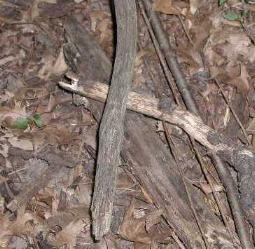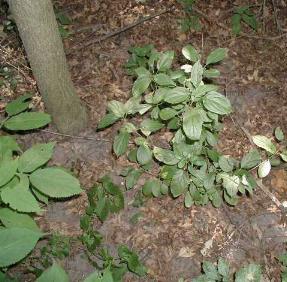|
Oak woodlands are
very patchy. Most of the forest floor consists of dead leaves,
fallen branches, and acorns. Scattered throughout are: small shrubs,
herbaceous plants and wildflowers, and oak seedlings.

Dead leaves and twigs on the forest floor.

Herbaceous
plants and shrubs are
scattered throughout the forest floor.
The plants grow wherever there is an
opening in the tree canopy that allows light to penetrate to the forest
floor. Younger oak trees have a less dense tree canopy therefore,
more light can penetrate through to the forest floor in a young oak tree
forest. This results in a less patchy forest floor than in a
mature oak forest. On the forest floor little or no grass is
seen. The canopy keeps the forest floor well shaded and cool,
therefore moss and mushrooms can be found growing on the litter layer
and on trees.
Back
Authors: Laurie Hanson, Kerry Dennison, and
Melissa Minter. October 2001.
© 2013 Anoka-Ramsey Community College - Biology Department.
The contents of this page have not been reviewed by ARCC.
Last Updated -July 28, 2016
Comments or Problems contact:
Melanie Waite-Altringer or
Joan McKearnan or
Terry Teppen
|